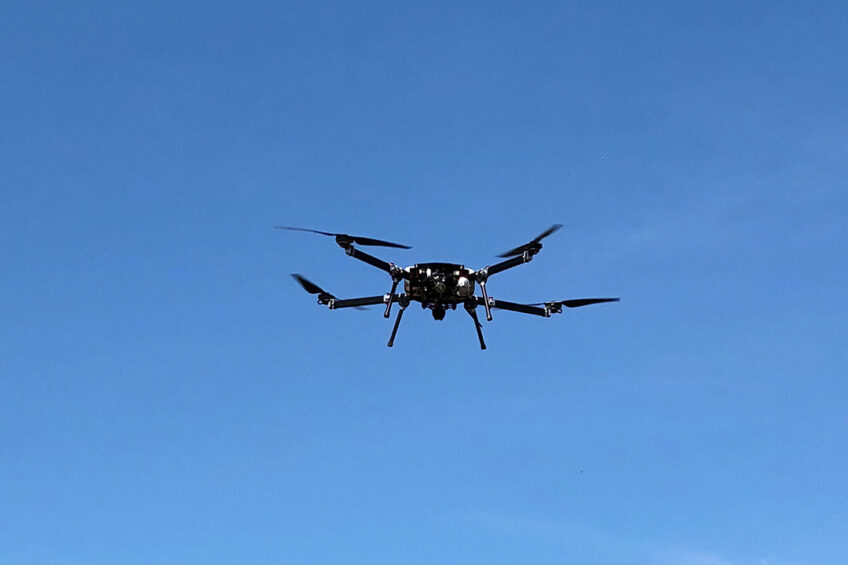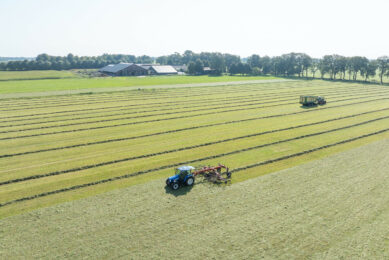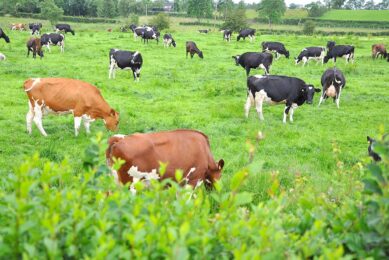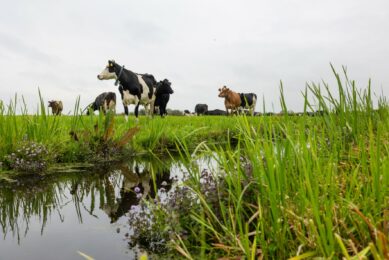New technologies to help dairy farmers measure pasture

Currently just 10% of Australian dairy farmers are estimated to measure their pasture. The Pasture Smarts project aims to improve this statistic by helping farmers to utilise new technologies.
“There are incredibly simple and very complicated options for farmers,” says Dr Elizabeth Morse-McNabb of Agriculture Victoria, project leader of the project. “But none of them gives them an answer straight away.”

The project will eventually provide farmers with an app, that will help them to fully utilise the potential of their pasture. “Pasture provides dairy farmers with their cheapest form of feed,” Dr Morse-McNabb points out. “If they have the ability to fully use their home grown feed first, they can increase their operating profit by $250 per ton per hectare, research has shown. On any individual dairy farm. That’s why our aim is to increase pasture consumption of any farmer, no matter what system they are in.”
Time to walk the pastures
Agriculture Victoria, Dairy Australia and the Gardiner Dairy Foundation have started the Pasture Smarts project as part of their DairyFeedbase programme. Dr Morse-McNabb emphasises that the project looks at a range of tools they could use to measure pasture.
“At the moment farmers just don’t do it,” she says. “Essentially there is not enough time and they don’t have the technology. Farmers have the option to walk through the paddock with a pair of gum boots to measure their yield. But yet it can still be difficult to find the time to walk the pastures.”
Measuring the paddock without the physical work
“Farmers are aware of the fact that there are some high tech robots around that can drive around on the paddock,” Dr Morse-McNabb says. “But how do you exactly set that up? How well do they work and won’t it get covered in pooh? In our project we are looking for ways in which farmers could actually measure pasture without physically going into the paddock.”
Ground based support still important
The project partners decided to have a good look at all available technology that can measure pasture yield. “We are testing these technologies with the principle of calibration and validation that agronomists use,” Dr Morse-McNabb explains. “We have drones, satellite information, ground based sensors, sonar and lidar sensors, attached to little vehicles. Most farmers have bikes, so the ground based support can still be an important component.”
 Dairy farmers shouldn’t be afraid to embrace new technology
Dairy farmers shouldn’t be afraid to embrace new technology
Dairy farmers should not be afraid of embracing technology if they can see a clear need for it and if the business model they have adopted can justify the cost.
The right tool for the right time
Each component has its place, Dr Morse-McNabb says. “Sometimes it’s too boggy and you can’t drive across paddock. That’s when we can move into the unmanned aerial vehicles (UAV’s). The drones give you the capability to see across the whole paddock, and whole farms potentially. At the moment we can do tens of hectares. That would be one of our longer drone flights. Drones have proved they can deliver large detail to farmers about their paddocks.”
All in all there is no single solution to measuring pasture yield. It has to be a combination.”
No single solution
Satellites can also play an important role, the project partners have found out. Dr Morse-McNabb: “They are readily available and there’s new satellites being launched frequently with lots of amazing sensors such as radar. From our point of view this is certainly worth testing. All in all there is no single solution to measuring pasture yield. It has to be a combination.” The drones and satellites have multispectral sensors.
Using a range of modelling techniques
“And we are using a range of modelling techniques,” Dr Morse-McNabb says. “That farmers can use to fill in the gaps when all the other technologies are not available.”
The project is now 2 years into its 5 year programme. Sonar has proven to be as accurate as the traditional methods of measuring pasture. Drones proved to be equally useful. “There seems to be some time involved in using UAV’s,” says Dr Morse-McNabb. “But the estimates are looking good. The use of satellite data looks promising but has a bit further to go. The benefit is that you can have a look at the whole farm but we are still working on the validation so cannot say exactly how accurate it is at the moment.”
The use of radar has not been validated yet and the modelling is in the process of being validated. “We are cross-calibrating all technologies, so farmers will be able to use them interchangeably,” says Dr Morse-McNabb. 7 farms are participating in the process, each with 2 paddocks, covered with perennial ryegrass.

Long-term benefits
One of the farmers that participate in the project, Peter Musson, recently said in the Australian Dairyfarmer that the long-term benefits of the Pasture Smarts project are significant. He urges farmers to embrace technology to increase efficiency and productivity.
Musson says he prefers the use of drones. “The satellite imaging is the cheapest but the downside is it’s not as accurate or consistent as other technology,” he points out. “It can be affected by how often the satellite can pass over and poor weather conditions. The sensor on the drone appears to be more accurate because of its proximity to the land.”
The new technologies will improve the sustainability of pastures and pasture utilisation long term, Dr Morse-McNabb says. “Farmers will know what the yield is of their pasture. Knowing how to manage it better will improve profitability and therefore make the farm more sustainable.”
Working system
The project aims to deliver a working system that includes the new technologies – if the farmer wants – and won’t take up too much time. Dr Morse-McNabb: “The actual delivery is still under development. We are currently working on an app, in collaboration with the farms that are part of the project. We hope to develop the product with our partner farmers to ensure it is ‘farm ready’. There will always be room for improvement, but we plan to make it informative and easy to use.”
Farmers will eventually be able to identify the next paddocks on their farm that are ready for grazing. They will be able to see where and how big they are, and how much yield there is on those pastures.
“They can then direct the appropriate herd to those paddocks,” says Dr Morse-McNabb. “Long-term it is also possible to understand the quantum of yield there is on their farm, where it is and the rate it is growing. That will decrease the risk of a shortfall in feed and enables farmers to forecast feed requirements earlier.”
The development of the app looks promising. “We are testing a very first version and farmers find it very easy to use on their phone,” says Dr Morse-McNabb. “It looks like farmers don’t have to do too much work for good results.”










